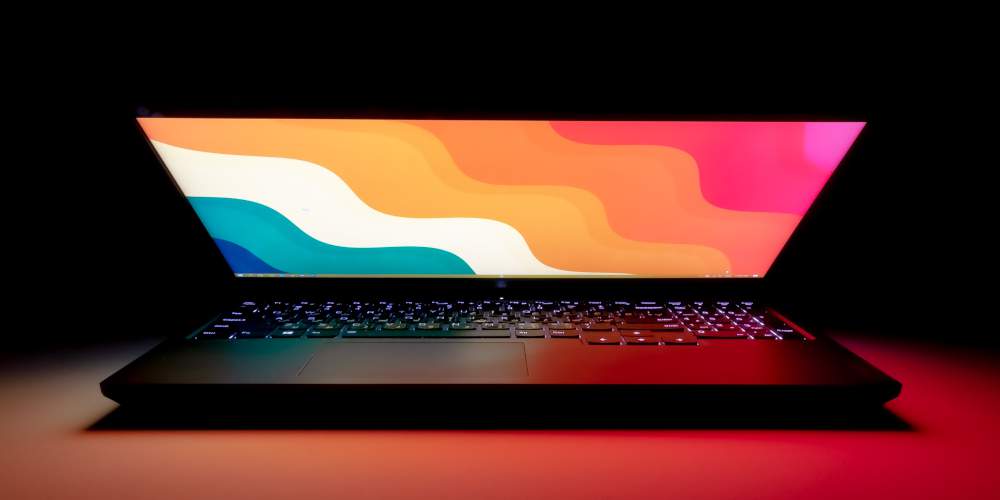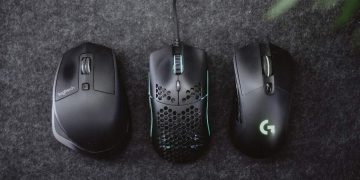Gaming laptops have gotten much better in recent years than they used to be. Modern gaming laptops actually provide a quality gaming experience, not one that you're just okay with. Choose the right gaming laptop, and you'll be happily gaming for years.
That said, even though gaming laptops have gotten better, they don't magically take care of themselves. Follow these tips to upgrade your portable gaming experience from merely good to great.
10. Keep Your Laptop Dust-Free
If you want the best performance when gaming, make sure to keep your laptop clean of dust. Not only will this help you get maximum airflow through your laptop for higher frame rates, but it will help extend the lifespan of your laptop by a few years.
Dust and debris from your environment loves getting inside your laptop and clogging up airways. Keeping your laptop internals as clean and dust-free as possible will help prevent buildup and clogs.
9. Check Windows Game Mode Settings
Windows 10 and Windows 11 both have a feature called Game Mode that automatically turns off certain apps and background services whenever you launch a game. You'll want to make sure this is turned on.
Click the Start Menu (or press the Windows key), then search for "Game Mode" and click on Game Mode settings. If Game Mode isn't enabled, check the slider to ensure that it is.
8. Shut Down Background Apps
Many apps these days have helper apps that run in the background even when the main app is closed. Microsoft Teams, Slack, and Adobe Creative Cloud are common culprits.
Background apps take up valuable computing resources—including RAM and CPU—that could be hindering your frame rate in video games.
Shutting down background apps isn't just handy for freeing up system resources, but also for ensuring you won't be interrupted by Todoist reminder pop-ups while raiding in Final Fantasy XIV.
7. Check Your Startup Programs
As a corollary to the previous tip, if you find yourself manually closing the same handful of apps every time you want to play video games, you might want to remove them as startup programs.
By removing them from startup programs, you'll prevent those apps from automatically launching every time you boot your laptop—meaning they'll only launch when you manually start them yourself.
Open the Start Menu and search for "Startup," then click Startup Apps. Here you'll see a list of programs that launch at startup. Uncheck all the apps you don't want to start automatically.
6. Stop Unneeded Services
If you really want to squeeze out every last drop of performance, you can disable unneeded services. We're not going to get into details here because this can potentially make your Windows unstable or even unable to boot up anymore—but it's a possibility if you need it.
5. Use Geforce Experience
If your graphics card is by Nvidia, the Geforce Experience can help you out significantly. Yes, it's annoying that you have to sign in, but it makes finding the base settings for games incredibly easy.
Once you launch a game, you can open Geforce Experience and it will automatically choose the optimal settings based on your system. Afterwards, you can tweak those settings to your liking (e.g. further reduce or disable options for even better performance).
Geforce Experience supports the vast majority of games available on PC, but it may be missing some indie games. Obviously, this tip won't work if you have a Radeon graphics card.
4. Add an External Mouse
Unless you exclusively play turn-based strategy games, your laptop's touchpad probably won't suffice for video gaming. While modern laptops have decent keyboards, touchpads are limited by their very design.
Incorporating an external gaming mouse—either wired or wireless—will turn your laptop into a full-fledge gaming PC that will follow you wherever you go. You can add an external gaming controller as well if you like, but you'll get more mileage out of a mouse.
3. Keep Your Drivers Updated
It's easy to ignore update prompts when you're busy, but those prompts are usually worth heeding because they can make big improvements to your performance—sometimes massively so.
We're not saying you need to keep your webcam drivers up-to-date at all times if you never use it, but certain hardware components are worth keeping updated as often as possible.
The most important one is your graphics card. While apps like Geforce Experience or AMD Adrenalin will regularly check for new drivers in the background, you can also manually check for new driver versions by heading to your graphics card manufacturer's website.
2. Check Your Power Settings
By default, Windows' power settings are aimed at providing a balance of performance and energy savings. If you haven't tweaked those settings yet, you could be missing out on significant performance gains.
In Windows 11, all you need to do is click the battery icon in the system tray, then click on the battery icon in the resulting pop-up. Then, under the Power Mode setting, choose Best performance.
1. Stay Plugged In
It's a laptop, which means it's meant to be portable, but if you're looking for the best gaming experience, you need to keep your power adapter plugged in to your laptop while gaming.
Why? Because even after tweaking Windows power settings, your computer will throttle performance when you're running unplugged.
Many modern laptops have built-in power saving measures that aren't easy to disable. Plus, even if you can unlock full performance while unplugged, your battery will die very quickly.
The easiest option? Stay plugged in.


